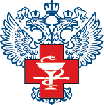 pirogov national medical surgical center
pirogov national medical surgical centernational center for researh and treatment of autoimmune diseases new jersey center for quality of life and health outcome research |
international symposium stem cell transplantation in multiple sclerosis: sharing the experience |
 |
 |
 |
 |
 |
 |
 |
 |
 |
 |
 |
 |
 |
 |
 |
| Long Term Outcomes of Autologous Peripheral Blood Stem Cell Transplantation in Progressive Multiple Sclerosis |
|
International Symposium "Stem Cell Transplantation in Multiple Sclerosis", Key-Note Lectures Book, 2009, p. 98-103 J. Xu1, B. Ji1, L. Su1, H. Dong2, X. Sun1, C. Liu1 Background Progressive multiple sclerosis (MS) is going with continuously disability and unresponsive to high dose steroid and immunomodulation. The autologous peripheral blood stem cell transplantation (APBSCT) has been introduced in treatment of the forms of multiple sclerosis. Due to stem cell transplantation involved two steps that are conditioning with high dose immunosuppressive agents and stem cell transfusion?the short term outcomes (within 3 years after transplantation) can not preclude the immunosuppressant roles of conditionings. So the long term clinical outcomes after APBCST need to be evaluated for patients with progressive MS. Methods The clinical outcomes of 24 patients with secondary progressive MS who were underwent APBSCT and follow-up more than 3 years were analyzed. The median follow-up time was 63 months (36-90). There were 19 females (79.2%) and 5 males (20.8%). The median age of the patients was 35(20-50). Medium duration of disease was 36 months (15-156), and medium attacking interval time was 6.5 months (4-12). Peripheral blood stem cells were obtained by leukapheresis after mobilization with granulocyte colony-stimulating factor. Modified BEAM conditioning regimen, Teniposide (600 mg/m2), melphalan (140mg/m2), carmustin (300 mg/m2) and cytosine arabinoside (800 mg/m2), were administered. Outcomes were evaluated by the expanded disability status scale (EDSS). No maintenance treatment was administered if no disease progression. Results No deaths occurred following the treatment. All patients were observed into two groups, relapsefree group and relapse group. The former includes neurological improvement and neurological stabilization after transplantation. The latter includes relapse with progression and relapse without progression after improvement. Among 24 patients, 17 patients were in relapse-free group. Of eleven patients were with continuous neurological improvement without any active events. Six patients remained neurological stable compared between the time before transplantation and last follow-up point. There were 7 patients were in relapse group. Of which, five patients had experience of neurological relapse but without progressive during the follow-up period. There are two patients experienced neurological deterioration after transplantation and need further immnosuppression treatment. The confirmed relapse-free survival rate was 57.4% and progression-free survival rate was 91.7% at 90 months according to Kaplan and Meier survival curve. We compared disease activity with attacking interval time, disease duration, patient's age and EDSS of pre-transplantation. There is a relationship between relapse-free event and attacking interval time, OR=5.454, P=0.01(95% CI : 1.499 to 19.844,) and without relationship with duration of disease (OR=1.009,p=0.758),patient's age (OR=1.136, P=0.147) and EDSS (OR=1.178, p=0.864) before transplantation. Conclusions APBSCT with conditioning regimen of modified BEAM is a promising therapeutic method to improve or stabilize neurological manifestations in most of progressive MS patients with failure of conventional therapy in long-term. The disease activity post transplantation has a relationship with attacking interval time of pre-transplantation. |
|
© KMart |
(last update) 28/10/2009 |